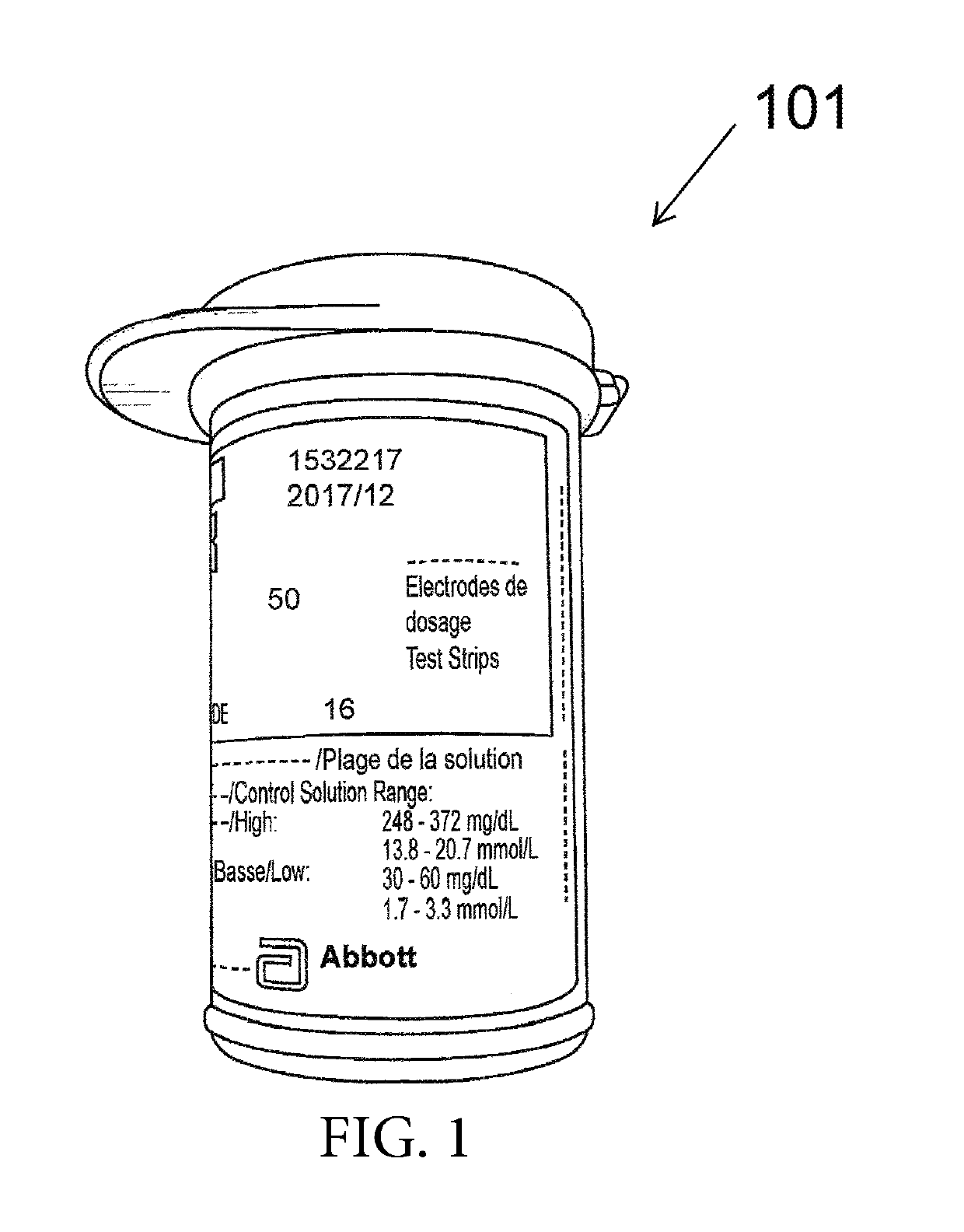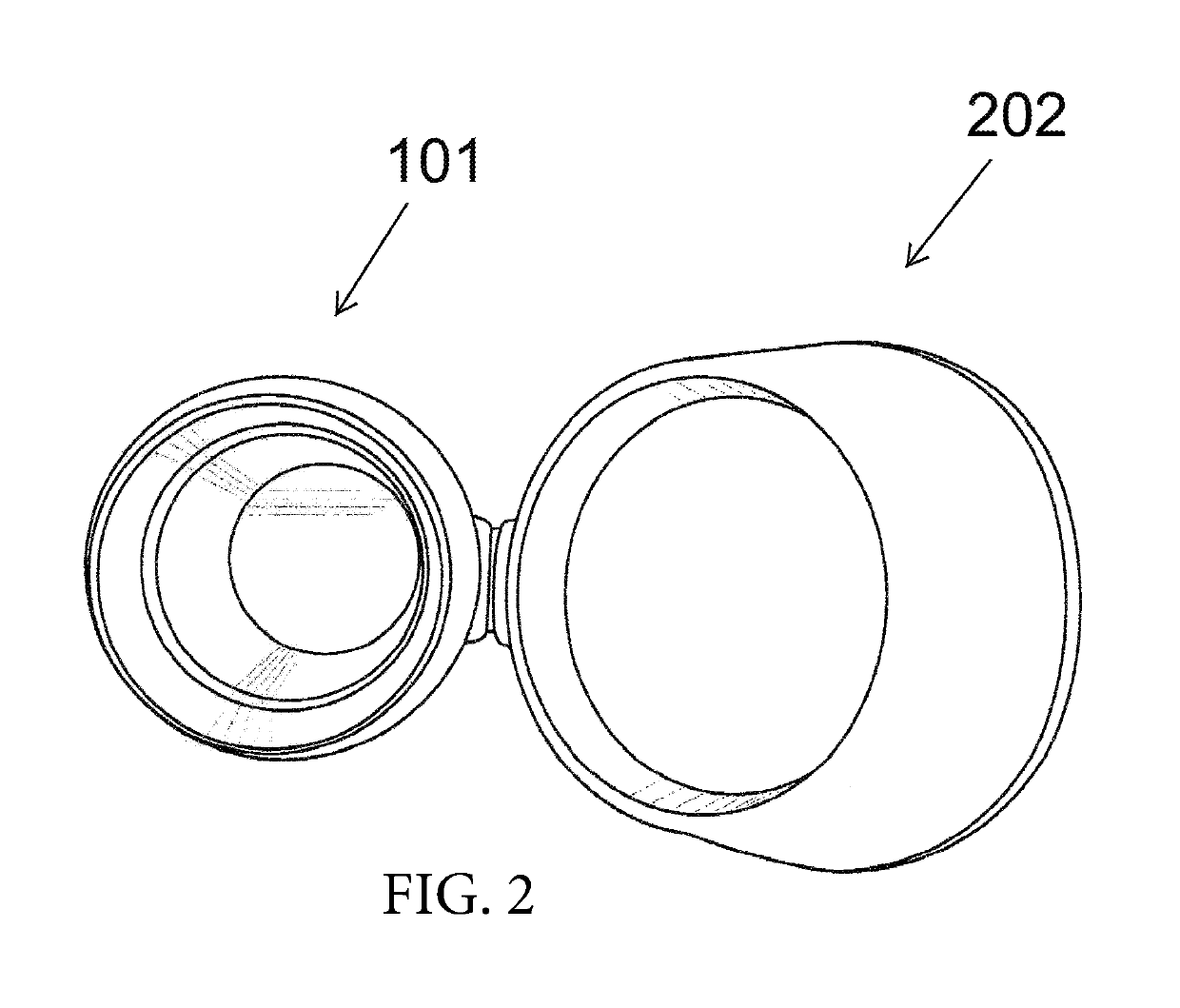System for improving diabetes testing and reducing counterfeiting
a test strip and counterfeiting technology, applied in the field of sealable diabetes test strips and diabetes test systems, can solve the problems of multiple organ failure, high test strips, long-term and serious problems, etc., and achieve the effect of reducing or eliminating the occurrence of grey
- Summary
- Abstract
- Description
- Claims
- Application Information
AI Technical Summary
Benefits of technology
Problems solved by technology
Method used
Image
Examples
Embodiment Construction
[0039]The invention provides a diabetes test system which includes significant improvements in diabetes test strip packaging and serves as a system and method for testing blood glucose level while ensuring the validity of the diabetic test strip. One aspect of the invention is directed to sealed and anti-counterfeit test strips that are easily and economically dispensed to the user. The invention also provides means for ensuring the validity of diabetes test strips from factory to end user. The invention also provides a means of communicating information from the diabetes test system to other devices or servers to assist the diabetic user.
[0040]Conventional diabetes test strips and their containers and labeling are illustrated in FIGS. 1-5 and FIG. 18. Specifically, FIG. 1 depicts a standard test strip container 101 used in the industry, typically made from plastic or some other non-biodegradable material. As illustrated in FIG. 2, the top lid 202 of the container 101 provides a clo...
PUM
| Property | Measurement | Unit |
|---|---|---|
| temperatures | aaaaa | aaaaa |
| temperatures | aaaaa | aaaaa |
| temperatures | aaaaa | aaaaa |
Abstract
Description
Claims
Application Information
 Login to View More
Login to View More - R&D
- Intellectual Property
- Life Sciences
- Materials
- Tech Scout
- Unparalleled Data Quality
- Higher Quality Content
- 60% Fewer Hallucinations
Browse by: Latest US Patents, China's latest patents, Technical Efficacy Thesaurus, Application Domain, Technology Topic, Popular Technical Reports.
© 2025 PatSnap. All rights reserved.Legal|Privacy policy|Modern Slavery Act Transparency Statement|Sitemap|About US| Contact US: help@patsnap.com



